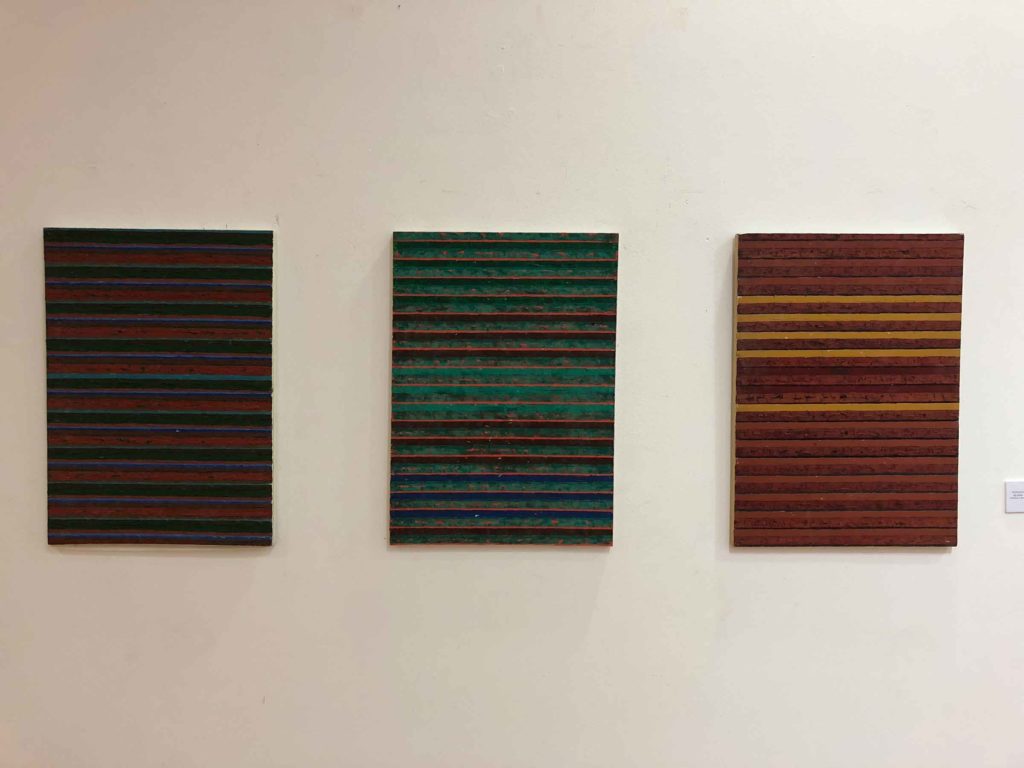
I was given some the worst travel advice I ever received while researching my trip to Podgorica. I started a thread on a travel forum asking where I could find the best modern and contemporary art in Podgorica/Montenegro and the answers were rather disheartening.
“Why are you going to Podgorica in the first place?”
“You won’t find anything there.”
But the nadir was, “If you’re visiting Montenegro to see modern art then you’re picked the wrong region of the world in which to travel. Montenegro is for going to the beach or hiking in the mountains. Perhaps you should consider another destination.”
This is an aspect of travel forums that can be so infuriating. I wasn’t asking for opinions on Podgorica or what generally there is to do in Montenegro. I wanted to know a specific thing, and yet everyone couldn’t help but chime in with their condescending opinions that didn’t answer the question. Also, screw them for discouraging a young(ish) person, enthusiastically ready to embark on a journey to see the world, from going on the adventure he wanted to take.
I have never come across a single country or region that has not created art in some form, whether it be visual, musical, theatrical or based in dance. These are the building blocks of culture, and all peoples on this planet have culture. To suggest that art is not flourishing in Montenegro is a grave insult to a century’s worth of Montenegrin artists who have been creating and exhibiting their works. I assure you that contemporary art is alive and well and living in Podgorica. Don’t EVER let the naysayers get into your head when planning your travels, even if that means going in blind and forging your own way.
Now that I got that off my chest (phew), as no one could help me before my trip, let me relay some of what I learned about modern and contemporary Montenegrin art and where to find it in Podgorica.
Centar savremene umjetnosti Crne Gore (Contemporary Art Center of Montenegro) in Dvorac Petrović (Petrović Palace)
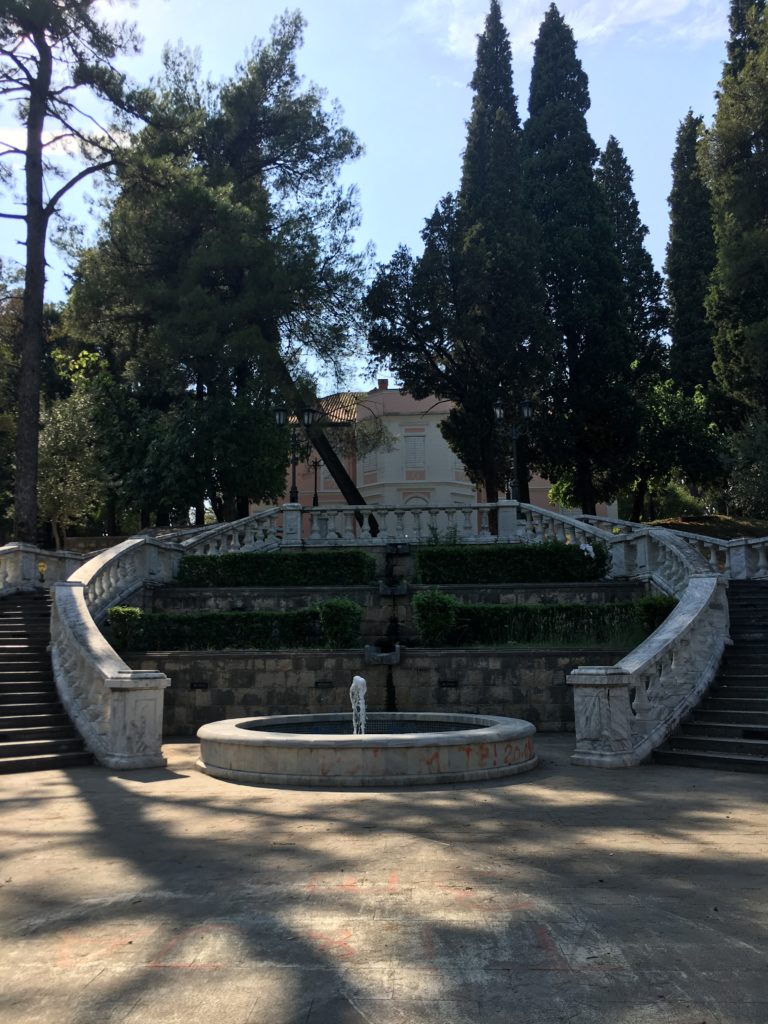
In my experience, when a former palace is turned into an art museum, it usually houses stuffy 17th-Century portraits of the nobility and idyllic landscapes of the countryside. Not here in Podgorica!
Petrović Palace, built in 1889 as the winter residence for King Nikola I, is home to one of the country’s most forward-thinking museums: the Contemporary Art Center of Montenegro. King Nikola I ruled Montenegro from 1860 to 1918 and remains a popular historical figure to this day; you can barely turn a corner without bumping into a statue or a street named after the former leader. Nikola I was responsible for modernizing the nation and enacting sweeping reforms in education and infrastructure. He was was a master diplomat and raised Montenegro’s profile on the world stage. In addition, the Ottomans were officially dispatched from the Balkans under his watch, so yeah, he was a beloved guy.
The monarchy resided in Cetinje, Montenegro’s former capital and where the President still lives today, but during the winter months Nikola and his family would escape to Podgorica and inhabit Petrović Palace. Jumping ahead to 1995, the Contemporary Art Center was founded and given the winter palace to display its growing collection.
Tadija Janičić
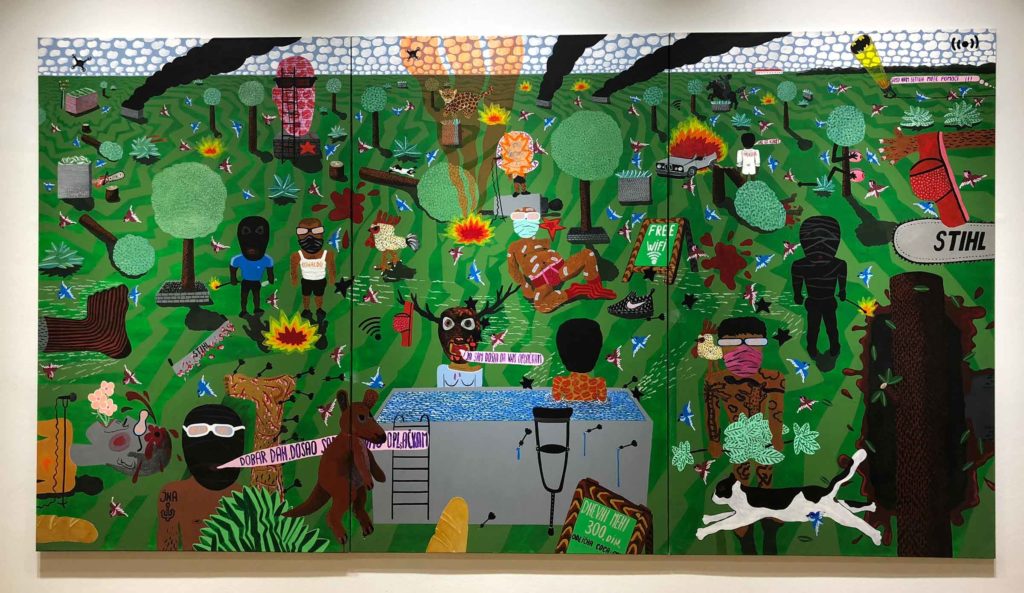
I was lucky enough to visit the Contemporary Art Center during their celebration of Tadija Janičić entitled “Pravi seda spavaš” or “Pretend You’re Asleep.” Janičić was born in Niksic, Montenegro in 1980, the year of Tito’s death. It’s interesting to see the output of an artist who grew up in a post-Tito Yugoslavia versus other Yugoslav artists who were more heavily influenced by the cult of personality that permeated his reign. Janičić’s works are decidedly fresh and often hysterically funny. The colors are bright and vibrant and his style of drawing figures and faces is instantly recognizable and unique.
It was love at first sight when I laid eyes on “Hooligans Were Naughty Again.” In the European football (soccer) world, hooligans are rabid fans who commit violent acts against other fans of opposing teams and/or destroy public property after a match. Hooliganism has been a major problem in Montenegro, even after several laws were put on the books that dole out stiff penalties for anyone caught in violation. (In 2017, hooligans threw an ignited flare at a Russian player during a match in Podgorica, causing him to sustain a concussion, which marked a turning point in anti-hooligan legislation.) Janičić depicts an epic scene of hooligans running amok, documenting their savagery with strokes of dark humor and imbuing them with an almost anti-hero status. I must have stared at this piece for 20 minutes before moving on.
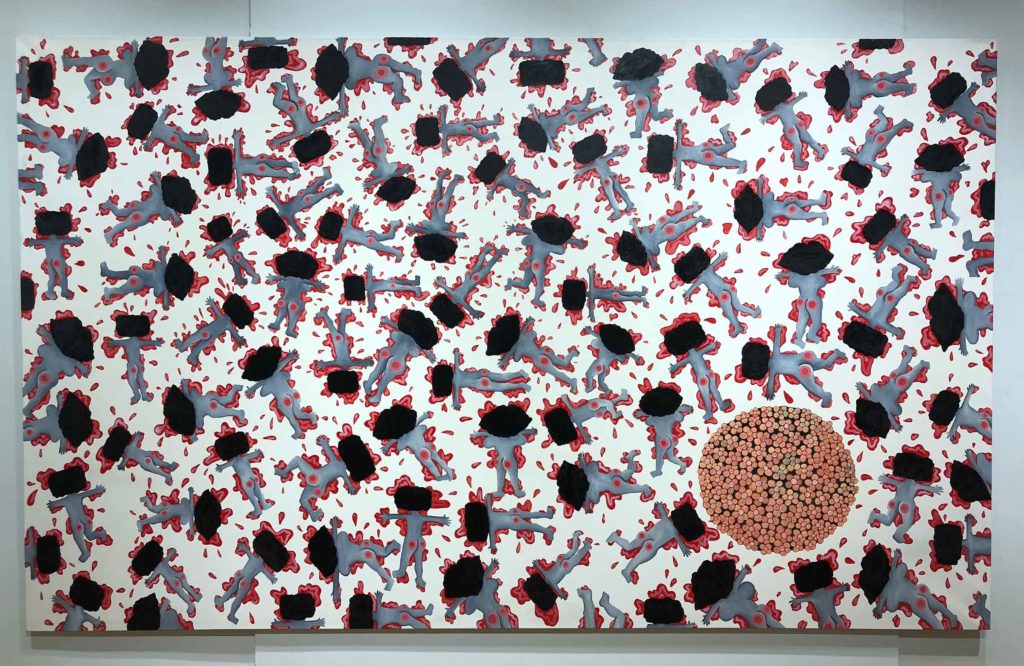
If the dark humor in “Hooligans Were Naughty Again” was akin to a mild salsa, “They Missed the Flower Pot” is more of the triple-jalapeño variety. Here, seemingly everyone in society has missed the “flower pot,” so to speak, and has landed with a splat in a pool of their own blood. No one could ever say that Janičić’s art isn’t evocative! There’s also a “Where’s Waldo?” quality to the depth of detail that makes you want to seek out every minute change from figure to figure.
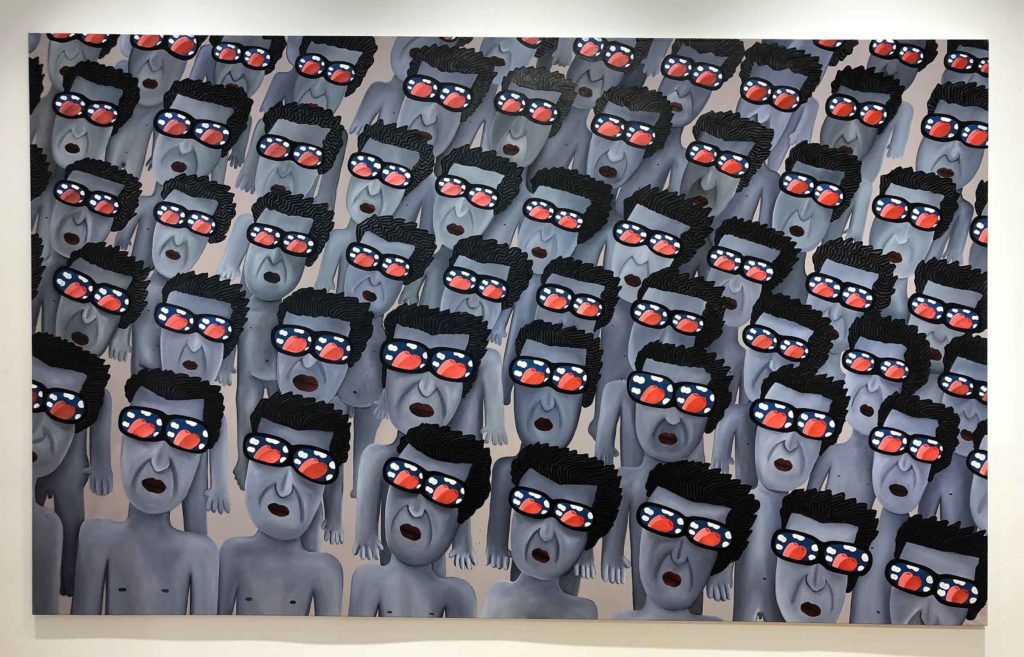
There’s also a mesmerizing quality to Tadija Janičić’s works when he repeats the same image over and over again. Sometimes I peer into these paintings as if they were “Magic Eye” posters, allowing my pupils to go cross-eyed, forming a field of double vision in hopes that a deeper meaning will manifest itself to me on the canvas.
Another thing to note is that my photos don’t do justice to the size of Janičić’s paintings. These pieces are quite large, covering up a good portion of the wall. They are quite overwhelming to experience in person.
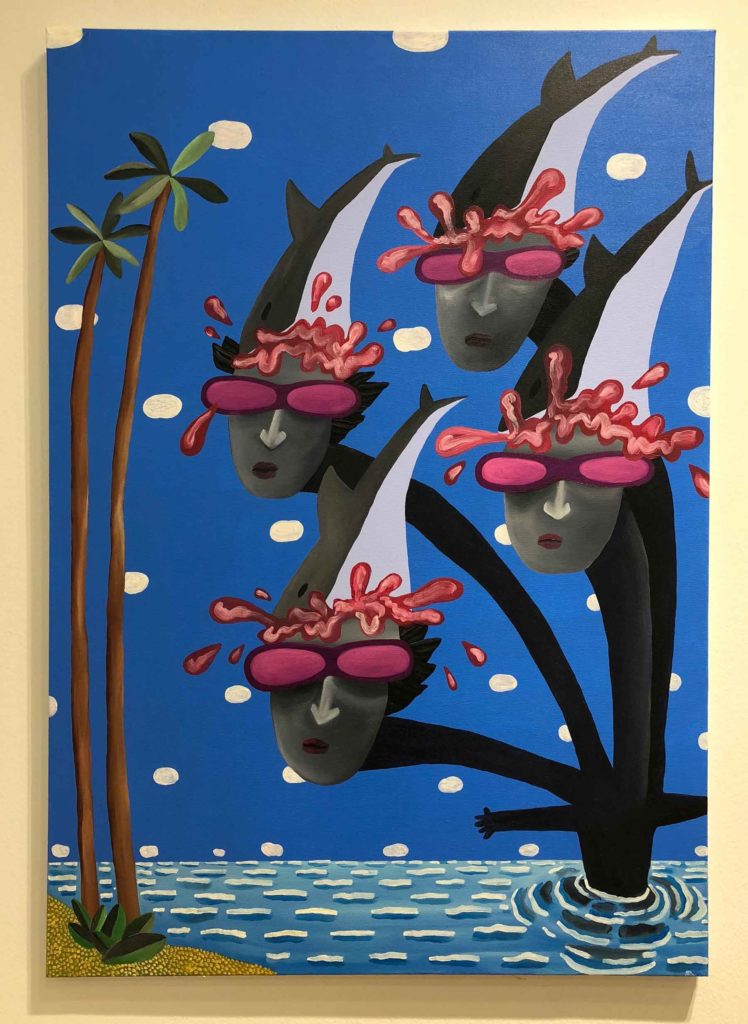
I very much enjoyed a series depicting tourists invading beaches in a tropical paradise. I don’t know if this was his intent, but it was a reminder for me that I am always a guest whenever I’m traveling and I need to treat the environment, city and people with respect. Travelers (especially Americans) need not be bulls in a china shop everywhere they go.
Street Art in Podgorica
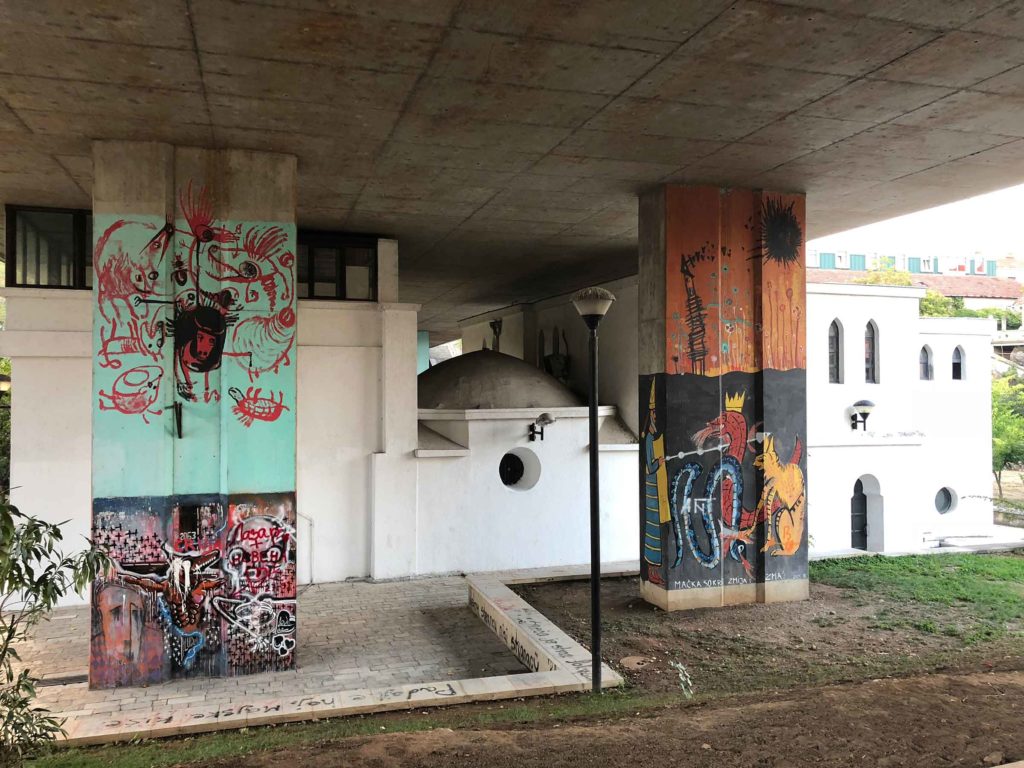
You won’t have to overturn every stone in Podgorica to find street art, but you might have to walk under a highway underpass or two. Here you’ll find plenty of evidence of the local street art community’s work.
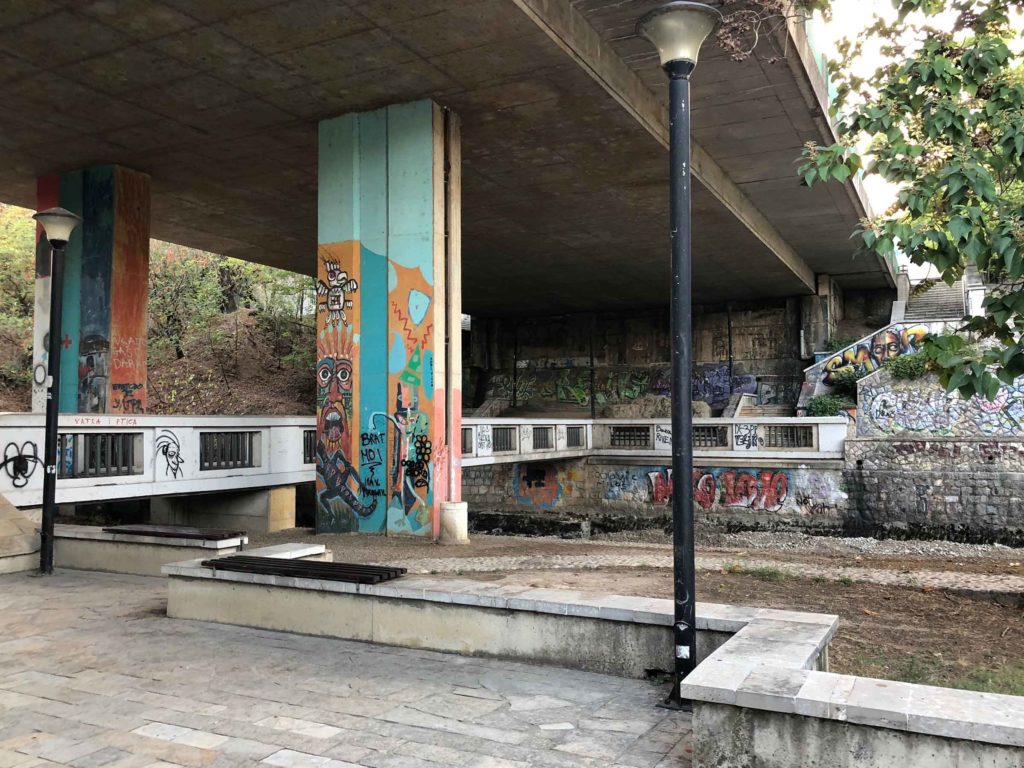
It’s interesting that here in America we often treat street art and graffiti as a crime and something that must be painted over, but in many other parts of the world it is held in higher regard. I wager that even the term “street art” is foreign to many Americans and they would buck at labeling it “art” in the first place. Denoting something as “art” bestows value upon it. Graffiti in an underpass is defacing public property, but when you elevate it to art then it becomes protected. It tells people that it has value to the community. Its messages have made the underpass better. It matters.
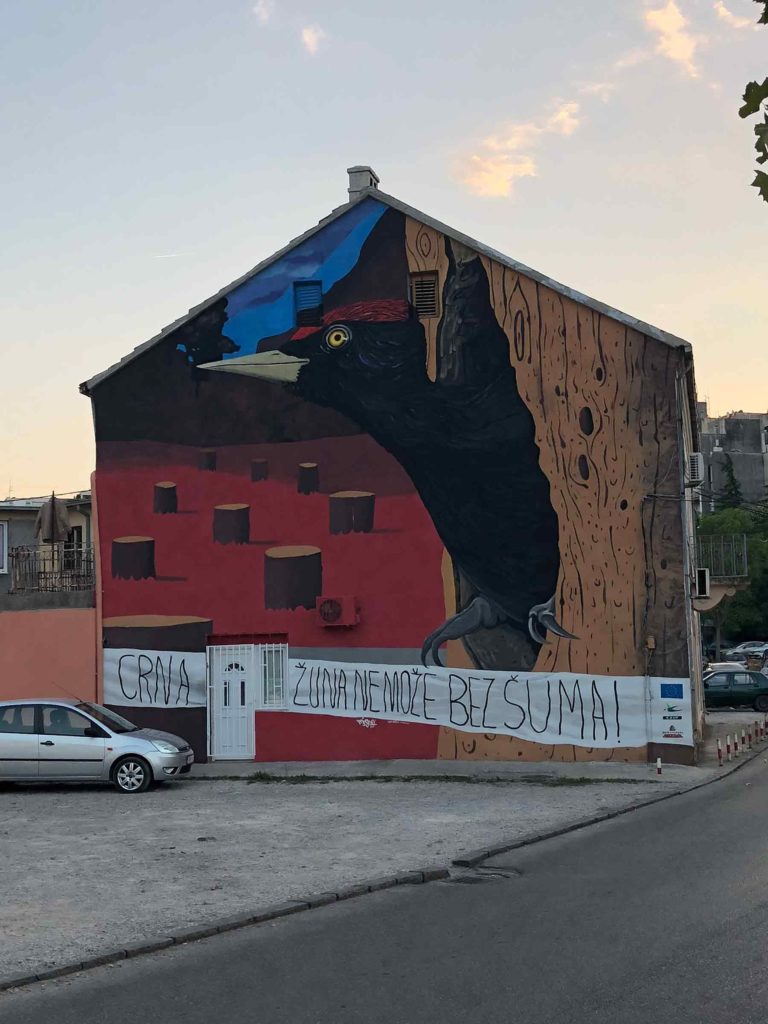
Street art often has a political message and deforestation is a great concern to young Montenegrins. The country is famed for its mountains and forests, which are home to many species of wild animals. After the black woodpecker saw a severe decline in population, a tree-planting initiative was started and the woodpecker population is on the rise again. Street art can play a vital role in swaying public opinion and shedding light on issues that might otherwise be swept under the rug.
Muzeji i Galerije Podgorice (Museums and Galleries of Podgorica)
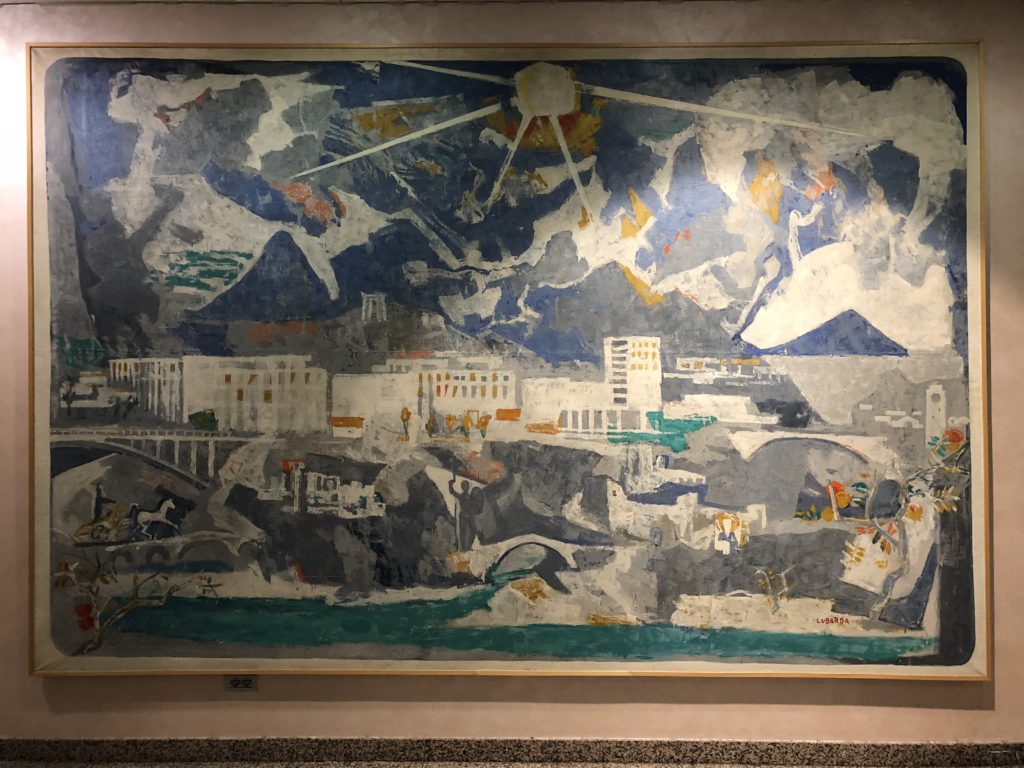
Cetinje may have Montenegro’s National Museum, but the capital has the Museums and Galleries of Podgorica, a city museum equally divided between history and art. I will discuss the history section of the museum in a later post and will focus on the gallery section here. Before we dive in, let me note that both this museum and the Contemporary Art Center are completely free to the public. Through both private donations and government funding, a premium has been placed on allowing this artwork to be accessible to people from all socio-economic classes. No one will be turned away from seeing art in Podgorica because of the price of admission.
When you first walk into the museum, which was built after WWII as a printing factory, you run into Peter Lubarda’s massive mural entitled “Titograd.” Painted in 1956, the painting is classic example of Yugoslav art in a post social-realist world.
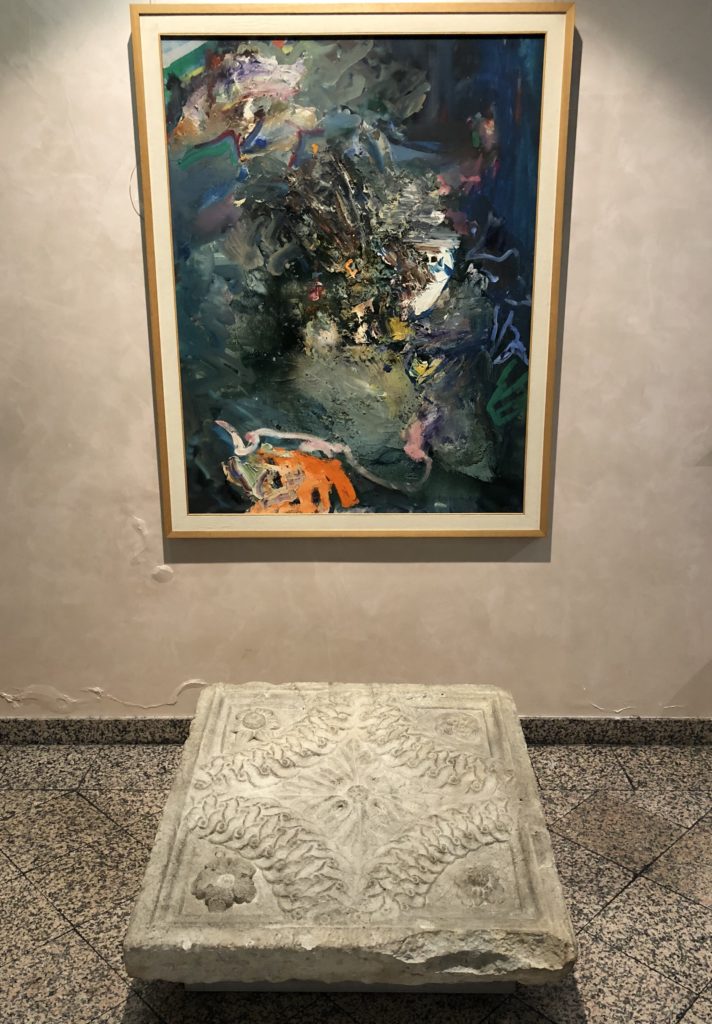
I enjoyed this display of a fragment of a column from the Roman settlement of Duklja, located right outside of Podgorica, which rests below a piece of Yugoslav/Montenegrin modern art. The Roman stone acts as a pedestal for the painting created thousands of years later. There is always a bedrock of ancient history supporting and influencing (even if subconsciously) the art of today.
Vesko Gagović
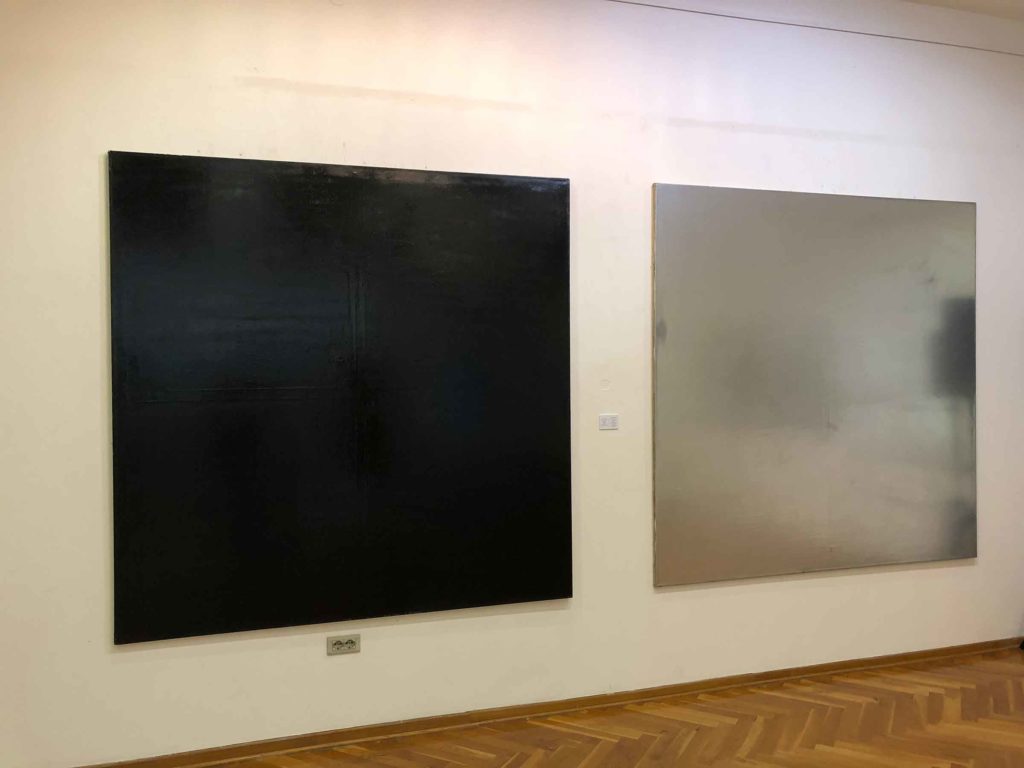
There must be something in the water at Niksic, because our next Montenegrin artist was born in the same town as Tadija Janičić seventeen years earlier. Vesko Gagović was born in 1963 and has risen to a place of prominence in Montenegrin art circles. Gagović was chosen to represent Montenegro at the 58th Venice Biennale, one of the highest honors one can receive in the art world. (The Venice Binnale is a prestigious celebration of contemporary art where each country or region sends someone who exemplifies their country’s artistic vision. It’s like a United Nations of Contemporary Artists and the event is attended by 500,000 art lovers from around the world.) The gallery was displaying a sneak peek of what Gagović would exhibit at the Binnale later that year.

I tried to capture as many paintings in each frame as possible because Gagović’s works are not meant to be viewed individually, but rather in concert with the other pieces in their series. Alone, each painting may appear on the surface “simple”- these are obviously minimalist works- but Gagović’s goal is to create a “pictorial environment” where the whole is greater than the sum of its parts. He attempts to create an illusion of reality through the transformation of the exhibition space, thereby creating a new reality altogether.
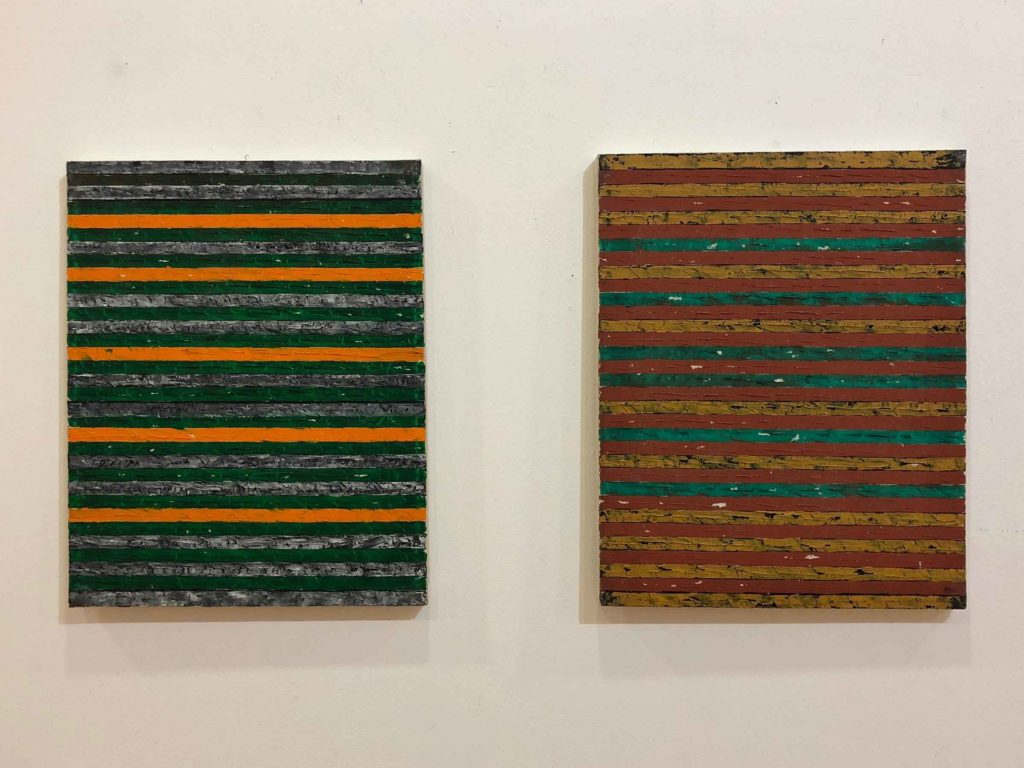
Gagović was inspired by Kubrick’s 2001: A Space Odyssey when putting together his latest series of paintings. He wanted to explore the relationship between time and space, the tangible and the intangible and reality and fantasy. These are certainly some broad topics and his work leaves much room for interpretation. I ask myself what mood do these pictorial environments create. (If the mood is nothing, that’s ok too!)
If you’re going to view contemporary art, an open mind is the number one requirement. If you shut down and say these are “just” lines, stripes and solid blocks of color you will never allow yourself to interact with the pieces. You can’t force yourself to feel something, nor should you, but openness must be the primary tenant when checking out an artist like Gagović.
Sculptures in Podgorica
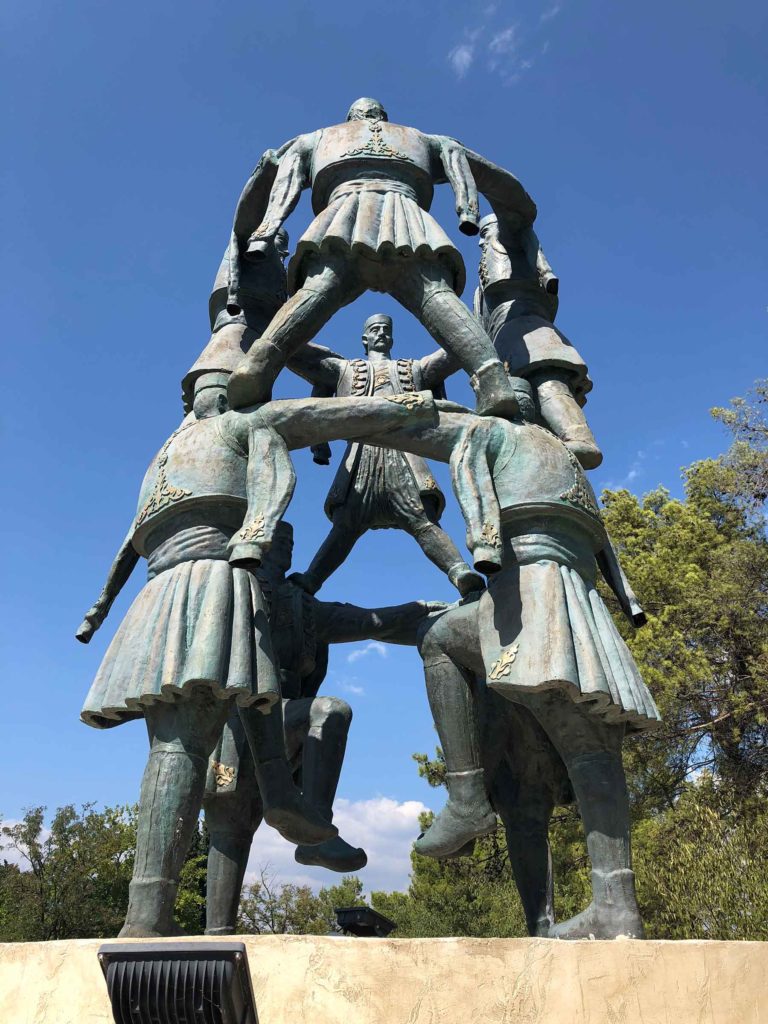
Тhe city government in Podgorica has been actively looking for ways to beautify the capital with outdoor sculptures, and create some extra tourist attractions in the process as well. This gives young artists a chance to show off their skills and reveal bits of Montenegro’s history and culture at the same time.
The Oro is a traditional Montenegrin dance that originated in the high mountains of the northern third of the country. Men stand on each other’s shoulders, reenacting the flight of eagles. Each of the figures were created individually and then were joined together during the construction of the monument. The piece was commissioned in 2016 to celebrate the 10-year anniversary of Montenegro’s independence.
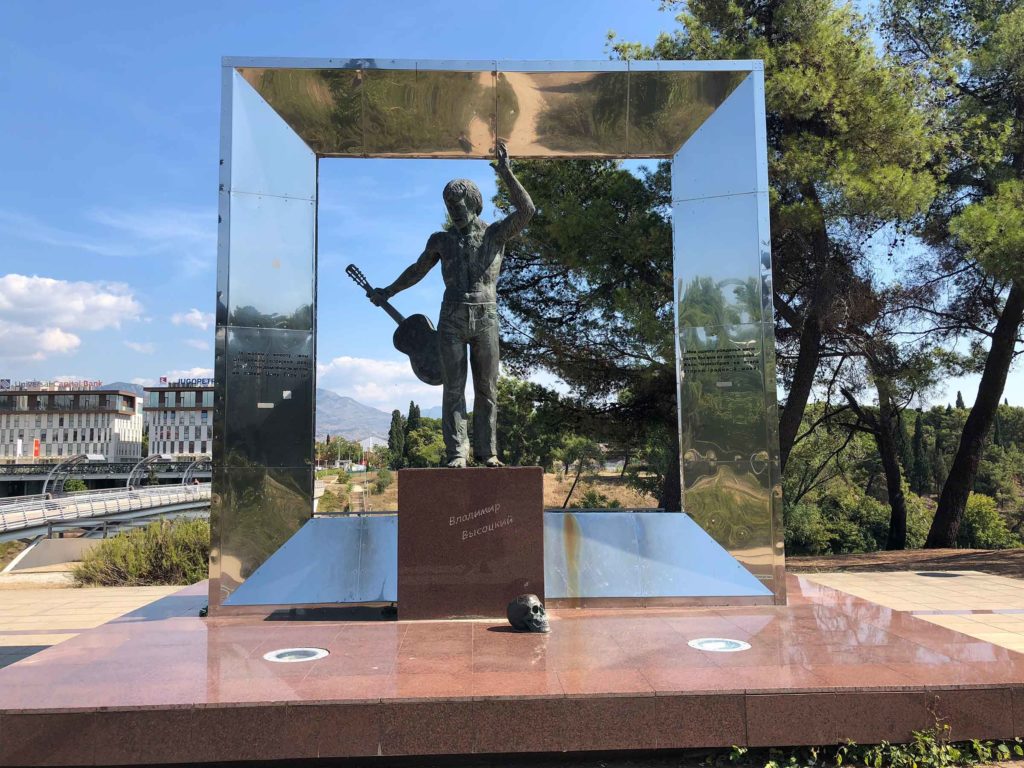
What the heck is a statue of a Soviet folk singer doing in Podgorica? Vladimir Vysotsky was born and died in Moscow at the age of 42; in his short life he became one of the most popular Soviet poets, actors and singer/songwriters of his time. At one point, he was permitted to travel to Podgorica, then known as Titograd, to work on a film for the local television station. He expressed his love for the city and its inhabitants in his poetry and viewed Montenegro as his second home.
Vysotsky’s statue is framed with a backdrop of the Morača River and the mountains surrounding Podgorica. The skull at the base of his pedestal is that of Yorick; Vysotsky’s final stage role was Hamlet. Of course, Yorick also symbolizes the inevitability of death and the meaninglessness of life once you realize this, so there is a double meaning here given the artist’s tragic, early demise. The monument was erected in 2004 and is just the right amount of weird for Podgorica.
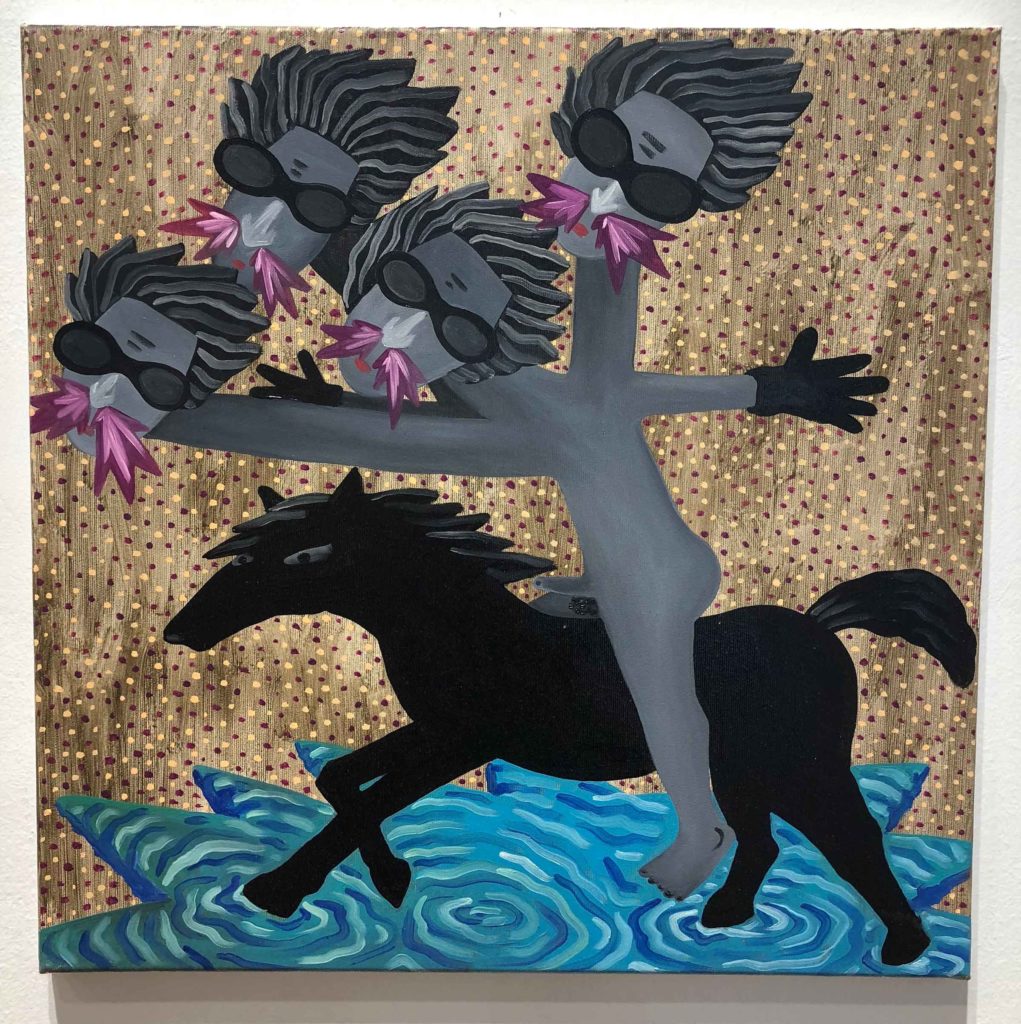
Of course, I could keep going on and on about all the wonderful modern, contemporary and outdoor art in Podgorica. I wish I could go back in time and send this post to the asshole on the travel forum who once tried to dissuade me from coming to Montenegro if my interests stretched beyond the nation’s natural beauty. Sometimes when you travel there is a clear path laid before you that many others have trod. Other times you will have to fashion your own way plan, and that’s what I did here, but I don’t want Podgorica’s art scene to remain a “hidden gem.” Janičić and Gagović deserve to have their names shouted from Montenegro’s fabled mountaintops. As more articles like this are (hopefully) written, my wish is for Montenegro’s artists to wind up on the well-traveled path where they rightfully belong.
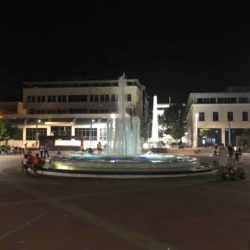
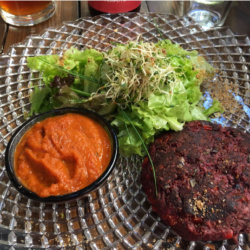
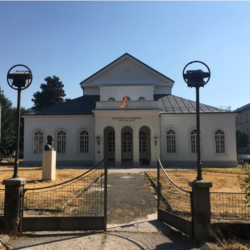
Vouloir c’est pouvoir
Félicitations et beaucoup de courage..
Merci bcp mon ami
Merci de nous avoir fait part de l’art Podgorica